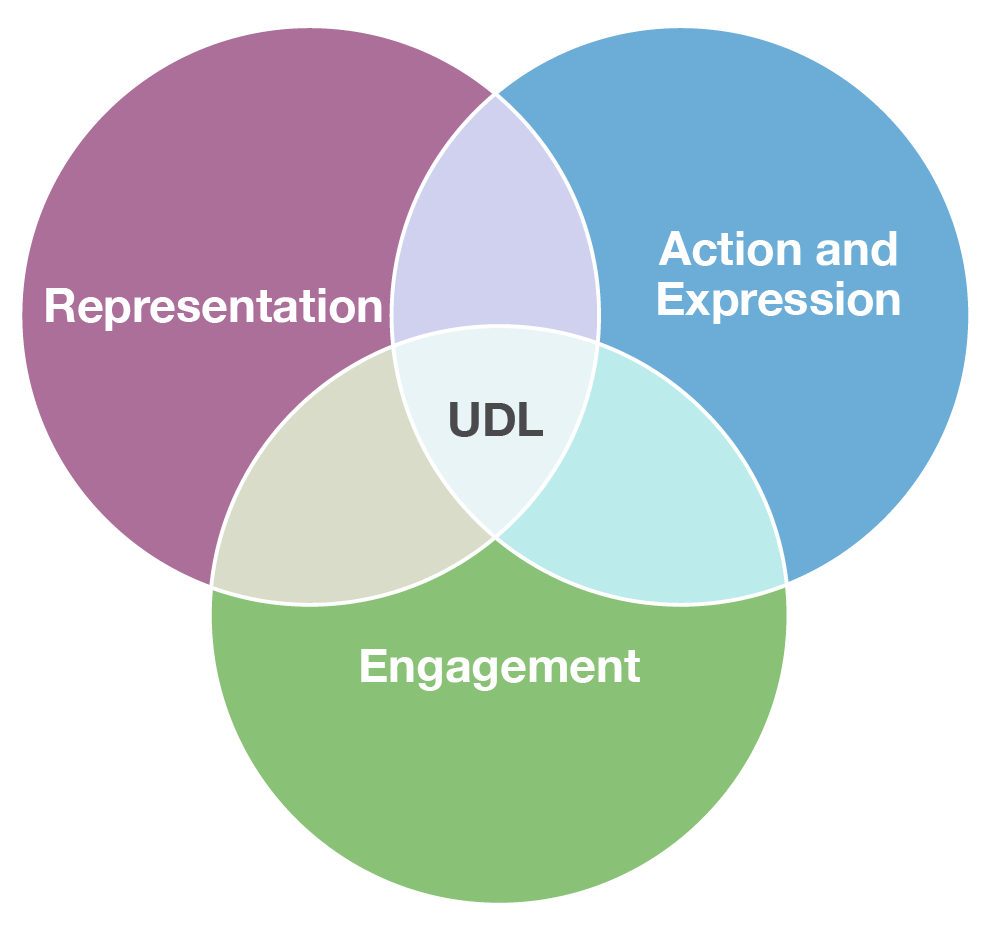Principles of UDL
The goal of UDL is to proactively eliminate barriers so that students can focus on learning and demonstrating their abilities. The principles of UDL focus on providing choice in the means that a student acquires knowledge and demonstrates their abilities. UDL encourages multiple means of engagement, multiple means of representation, and multiple means of action and expression.

Multiple means of engagement
This is also known as the “Why” of learning. The goal is to appeal to the learner’s emotional or affective networks to increase motivation and to recruit interest. Optimise individual choice and autonomy, which increases relevance and value of the material.
Example: Include assignments with topics that feel relevant to students’ lives. Recognize diverse backgrounds and explore roles, statuses, contributions, and experiences of groups typically underrepresented in research studies.
Multiple means of representation
This is also known as the “What” of learning. The goal is to present information and content in a variety of ways. Gardner’s theory of Multiple Intelligences suggests people perceive and process information using a combination of eight different modalities. UDL encourages a learning environment that varies the way material is delivered. Modalities may include verbal/language, visual images, logical/reasoning, body/applied physical interaction, music/rhythm, intrapersonal/personal application, interpersonal/ between people and naturalist/patterns in the way nature works.
Example: Incorporate visuals into lessons (visual images, drawings, diagrams or videos) to supplement lectures. Share course material in a digital format with all students, which allows for immediate access and alternate format without delay. Record lectures (even in-person ones). Have practice exams available.
Multiple means of action and expression
This is also known as the “How” of learning. The goal is to provide learners with a multitude of ways to demonstrate or express what they know. Learning is an activity and students should be actively engaged in the process. Enlisting technology provides opportunities for physical interactions with the material. A test is one way to measure knowledge, but it may not be the only way. UDL encourages giving students choice for instruction and evaluation.
Example: Allow for choice in how learning outcomes are met. Give students the opportunity to choose between a test, essay, oral presentation or display, to demonstrate their knowledge and abilities.
UDL Guidelines |
Multiple Means of Engagement | Multiple Means of Representation | Multiple Means of Action and Expression | |||||||||
The ‘why’ of learning | The ‘what’ of learning | The ‘how’ of learning | |||||||||
| Emotional/Affective Networks | Content in a variety of ways | Variety in demonstration of knowledge | |||||||||
|
|
| |||||||||
Multiple Means of Engagement | |||
The ‘why’ of learning | |||
| Emotional/Affective Networks | |||
| |||
Multiple Means of Representation | |||
The ‘what’ of learning | |||
| Content in a variety of ways | |||
| |||
Multiple Means of Action and Expression | |||
The ‘how’ of learning | |||
| Variety in demonstration of knowledge | |||
| |||

